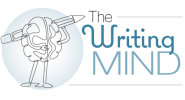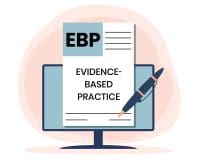One of the greatest challenges in writing is narrowing the topic. Beginning and experienced writers alike frequently want to tackle topics that are too broad to fit into the typical space allotted for a traditional journal article. For example, the topic of acute myocardial infarction (MI) has filled many books, so you would need to narrow (or focus) the topic to fit into a standard journal article.
Finding the sweet spot
Use the word count in the author guidelines for the journal you intend to query to help you determine how narrow your topic should be. Keep in mind that you want to provide enough substance so readers can apply what they read in practice—if your topic is too broad, you won’t be able to do that. Conversely, if the topic is too narrow (which usually is much less often a problem), you won’t have enough content or you’ll end up providing extraneous detail to fill the page.
As you narrow your topic, think about what you want to accomplish. Keeping with MI as an example, you might start with deciding whether you want to write about ST-elevation MI or a non–STEMI because treatment varies between the two. Or, you could focus on an aspect of care such as predischarge patient education or MI complications. Depending on the word count, you might need to narrow even more; for instance, focus on arrhythmias or mechanical complications of MI, rather than all complications.
Reviewing the literature can help you narrow by showing you the more focused topics within a broader one that have been published. You also might consider asking colleagues about what they’ve encountered in their practice or simply think about what aspects of a topic resonate with you.
A valuable tool
Mind mapping can help you winnow down a topic. This valuable tool helps you identify and understand the structure of a subject and how the main topics fit together. It also taps into how your brain works by allowing your thoughts to flow freely.
Here’s how mind mapping works: First, start with a central idea or a main topic in the middle of a large sheet of paper. Then add branches and sub-branches to further represent subtopics and your ideas. Next, look at relationships to see possible linkages. For instance, your mind map related to care of patients newly diagnosed with diabetes might result in a branch related to nonpharmacologic aspects of care, which includes topics such as exercise and diet.
If you’re technology oriented, you might want to use a digital tool—such as FreeMind, SimpleMind, or Coggle—for your mind map. Many of these tools offer a free version with limited functionality, which may include the ability to download your map as a PDF so you can share it with potential coauthors.
Another way to narrow your topic is to consider focusing on an aspect that’s new, different, or unseen. For example, you might decide to narrow your article on hepatitis C to focus on new guidelines or disease management in people who are homeless.
Thoughtful review
As you start focusing your idea, don’t take time to critique your thoughts—just write down everything related to your topic, including ancillary ideas and research. After that’s done, it’s time to consider your mind map or notes with a critical eye, always thinking about what will be most helpful for those you want to read your work. Consider, for example, the topic of staffing during a pandemic. Your focus would differ whether you’re writing for nurse executives (who must consider overall staffing needs) or charge nurses (who are responsible for a single shift).
Be aware of the difference between “nice to know” and “need to know.” Just because you know it, doesn’t mean you have to share it. I frequently have to remind myself that although I want to share everything I know with readers because I love the overall topic, they won’t be interested in absorbing that much information. Instead, their eyes will glaze over, and I’ll miss the opportunity for them to absorb key messages.
Narrow for success
With a bit of work and a lot of thought, you can narrow your topic into one that will fit into a journal article. Taking this step will help avoid an editor’s rejection of a proposed topic that’s too broad and also make it easier to write the article.
Reference
Saver C. Anatomy of Writing for Publication for Nurses, 3rd ed. Indianapolis: Sigma; 2017.



















